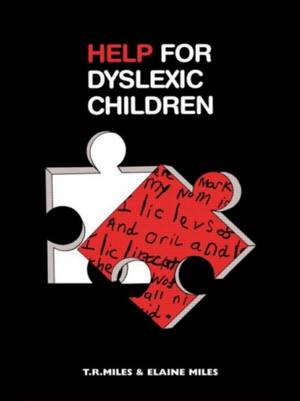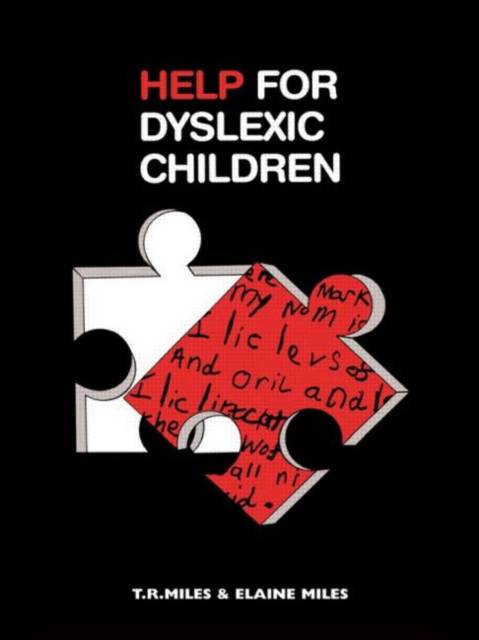
Door een staking bij bpost kan je online bestelling op dit moment iets langer onderweg zijn dan voorzien. Dringend iets nodig? Onze winkels ontvangen jou met open armen!
- Afhalen na 1 uur in een winkel met voorraad
- Gratis thuislevering in België vanaf € 30
- Ruim aanbod met 7 miljoen producten
Door een staking bij bpost kan je online bestelling op dit moment iets langer onderweg zijn dan voorzien. Dringend iets nodig? Onze winkels ontvangen jou met open armen!
- Afhalen na 1 uur in een winkel met voorraad
- Gratis thuislevering in België vanaf € 30
- Ruim aanbod met 7 miljoen producten
Zoeken
Help for Dyslexic Children
E Miles, Mrs Elaine Miles, Professor T R Miles, T R Miles
Paperback | Engels
€ 65,95
+ 131 punten
Uitvoering
Omschrijving
First Published in 2003. The authors' two earlier books, On Helping the Dyslexic Child and More Help for Dyslexic Children, are here presented as a single volume. This book is concerned with all aspects of helping dyslexic children. A brief account is given of what dyslexia is and what are the kinds of difficulties which these children have to face. A chapter entitled 'Help at home and at school' shows how they can be encouraged and given confidence; a chapter entitles 'Help for the seven-year old' indicates how informal help with reading and spelling can be given in the home; while further two chapters set out the essentials of a programme for teaching spelling which takes account of their distinctive strengths and weaknesses. Children are encouraged to build up their own dictionaries and sentences are include which will enable them to practise a systematic way what they have been taught. A final chapter makes some suggestions for help with arithmetic, and advise s given on the choice of the readers, workbooks and materials. The authors emphasise the need for common sense on the part of both parents and teachers, coupled with careful observation of the kinds of things which dyslexic children find difficult even when they display striking ability in other ways.
Specificaties
Betrokkenen
- Auteur(s):
- Uitgeverij:
Inhoud
- Aantal bladzijden:
- 128
- Taal:
- Engels
Eigenschappen
- Productcode (EAN):
- 9780415045704
- Verschijningsdatum:
- 19/05/1983
- Uitvoering:
- Paperback
- Formaat:
- Trade paperback (VS)
- Afmetingen:
- 126 mm x 198 mm
- Gewicht:
- 113 g

Alleen bij Standaard Boekhandel
+ 131 punten op je klantenkaart van Standaard Boekhandel
Beoordelingen
We publiceren alleen reviews die voldoen aan de voorwaarden voor reviews. Bekijk onze voorwaarden voor reviews.











